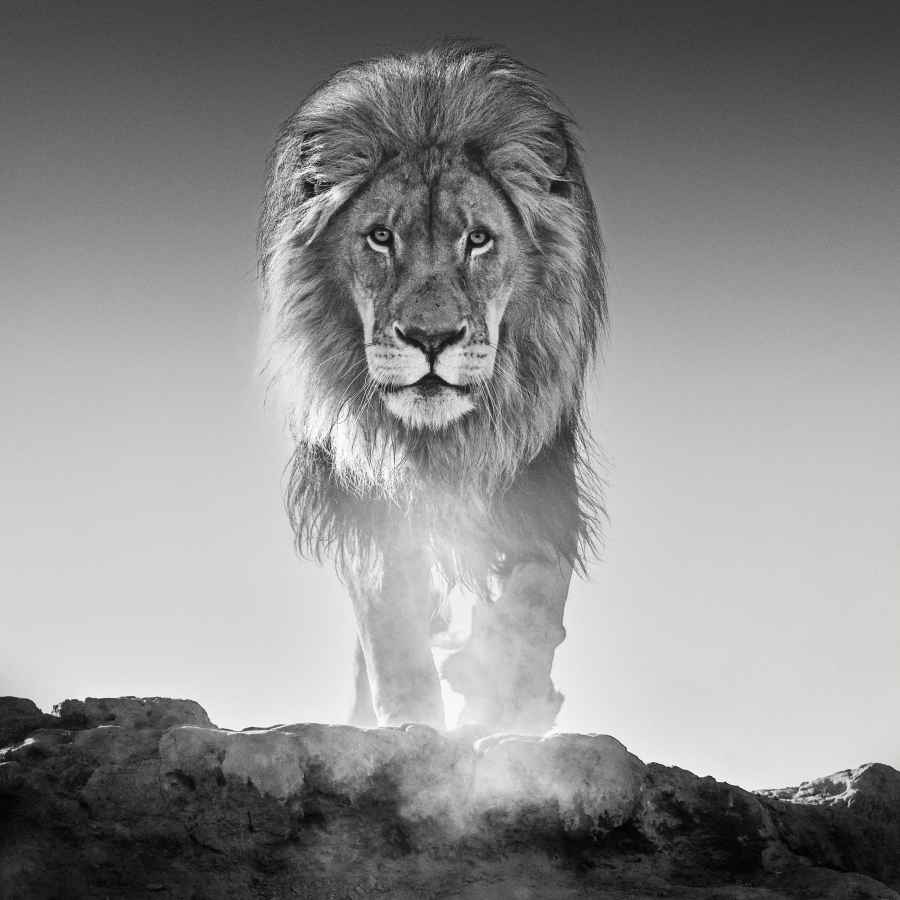At the beginning of his career David Yarrow was photographing sports stars and not wildlife. Aged just 20, he shot an iconic image of footballer Diego Maradona holding the FIFA World Cup aloft after Argentina had won the 1986 final against West Germany in Mexico City. But, despite naming his early photographic heroes as legendary British sports photographers Eamonn McCabe and Chris Smith, Yarrow quickly realised he was in a crowded field.
He explains, ‘I remember being at an Olympic Games… I thought I’d got a good shot and then there were six other adjoining photographers that had exactly the same image. That was only going to go one way with motordrives, digital, frames per second, improved telephoto lenses and improved resolution in low light. With sports photography, even back in 1990, I worried that it was going to become a space characterised by over-supply of imagery.’

The Untouchables, Amboseli, Kenya, 2017
Yarrow took a break from taking pictures for a living to go into the world of finance. He didn’t return to it with gusto until around 2003, after his marriage fell apart, when photography became an ‘escape’. With a refreshing candour he reveals his path to photographing wildlife and warns some of his views might be ‘unpalatable’. He notes, ‘There are four or five genres of photography that take up about 85% or 90% of the population of photography… so you’ve got sport, female form, landscape, wildlife and still life.’ Yarrow explains, ‘Female form photography is f***ed, but it’s only really been f***ed in the last three or four years because of MeToo and the gratuitous use of the female form. If someone is going around with a camera photographing naked women I think the world is increasingly questioning why they’re doing it, because they can’t be doing it for commercial gain.’
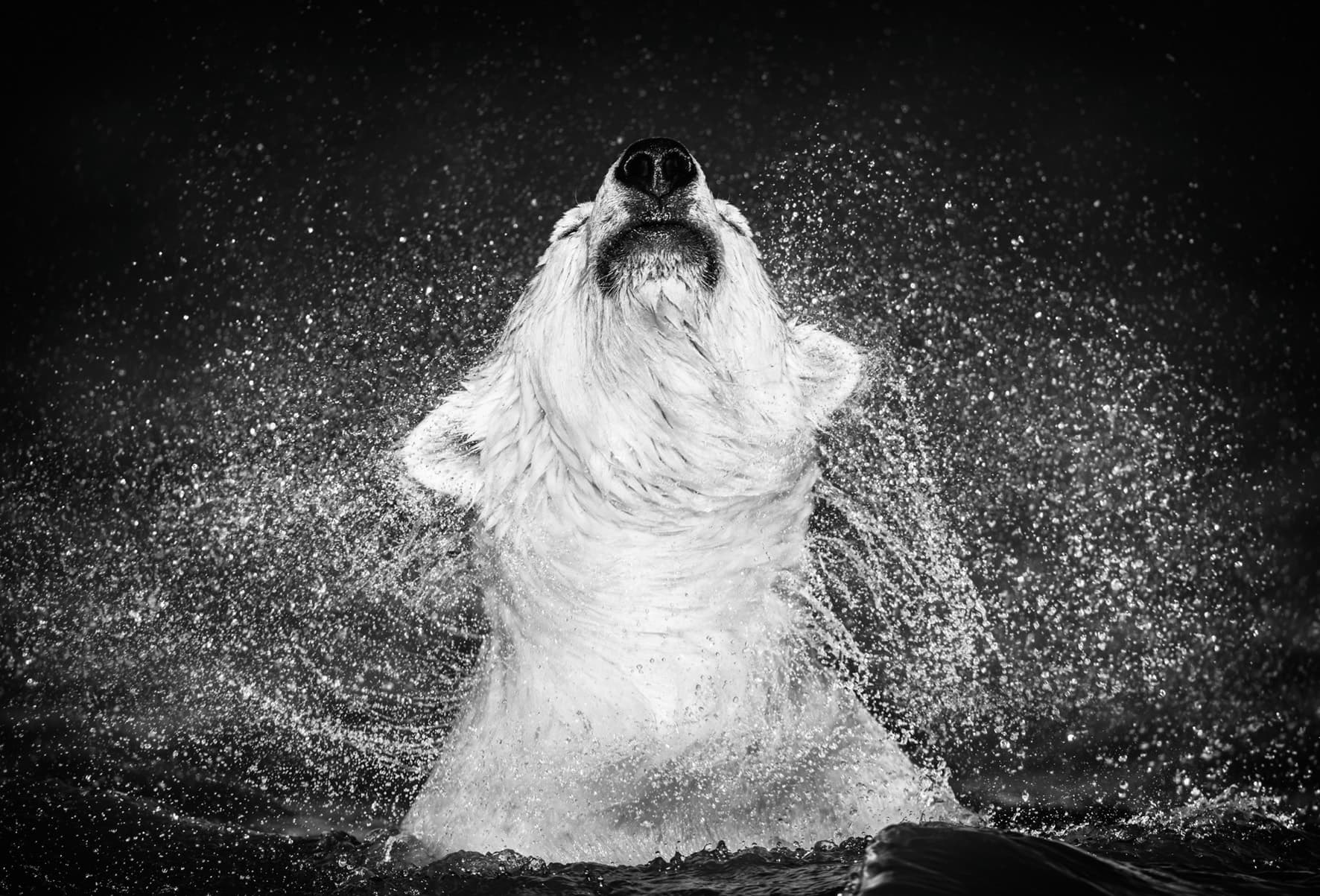
Diamonds in the Sky, Alaska, USA, 2018
He dabbled in landscape photography but chose not to pursue it, ‘Because how can you take a picture better than Ansel Adams did at Yosemite?’ Yarrow continues, ‘War photography is for the brave and I have huge admiration for those [photographers]. So I was left with very few choices. I felt that I’m not a wildlife photographer, I’m a photographer, but I sensed that maybe wildlife was an area that maybe had been done down a bit, that people were using these long lenses to be lazy but that [approach] cuts the emotion.’
A journey into fine art Yarrow’s epiphany about the potential of creating fine art wildlife imagery came after a financially unrewarding trip to shoot great white sharks in South Africa. ‘I got obsessed with sharks and spent a lot of time in Cape Town trying to get a great white predating in False Bay. When I finally did I got a £16,000 cheque from Getty, but it cost me £18,000 to take the picture. It’s clearly not a very good way to earn money if I’ve lost £2,000 taking that picture.
Then a lawyer from Houston called me up and said, “Are you the kid who took the photograph of the shark?” and I sold him $20,000 worth of a print. That was when the penny dropped.’ He adds, ‘Nick Brandt and Peter Beard were the two photographers I’d watched who had turned wildlife photography into art. People point to that Jim Brandenburg picture of a wolf behind the tree [as being art] and I felt that there was opportunity there. But I knew it was going to take an awful long time to get to a brand we’ve got now where people pay, bizarrely, $100,000 for an image.’
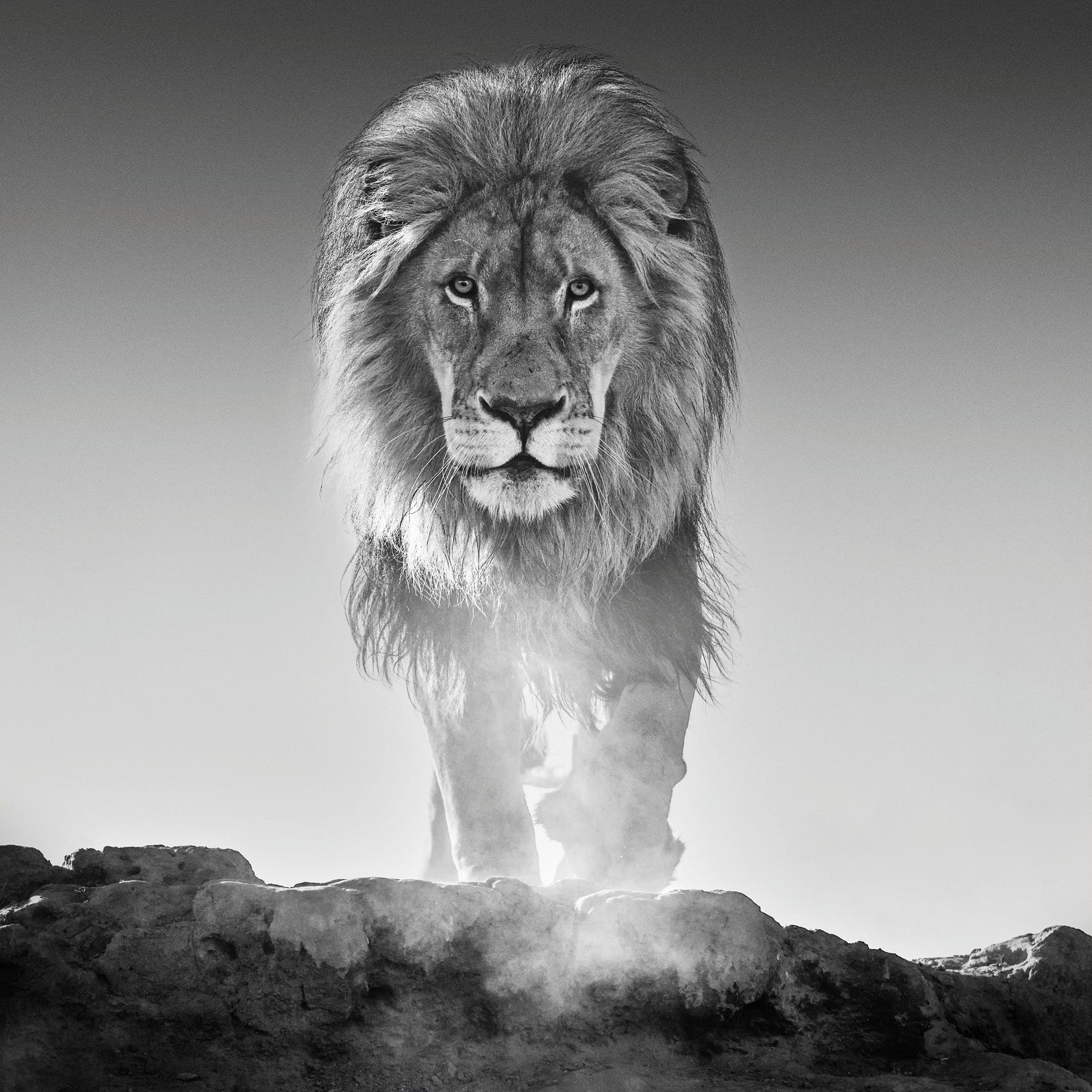
The Old Testament, Dinokeng, South Africa, 2017
Close-ups and humour
The latest fruits of Yarrow’s shoots are showcased in the new book Americas, Africa, Antarctica, Arctic, Asia, Europe. It primarily features his trademark close-up images of wildlife – often shot with remote gear that’s sometimes scented to attract certain animals, such as lions and polar bears – interspersed with more humorous work featuring models and animals.
Yarrow reveals, ‘The key thing about this book is our team stayed in Verona for two-and-a-half weeks with the printers getting the print work to almost a photographic [print] quality. I think you can see it in terms of the tonal range of the prints. It [the book] also needed to be big. My images are huge when they’re in galleries, so it would be silly not to have a big book.’

Chicago, Illinois, USA, 2019
Notably, each image in the 368-page book comes with a detailed description of how it was shot. He explains, ‘I think there’s a lot of strong work there. There’s 65,000 words and it was important to me to talk about behind-the-scenes and give context to every image.’ Long-term Nikon user Yarrow is a diehard Nikon user, as well as being a Nikon Ambassador, yet he confesses, ‘I have used Hasselblad. I did a book with Hasselblad and I tried to work with their new series of cameras not too long ago, but they’re just not robust or quick enough for me. I think it’s the better the devil you know. The D850 [camera] was made for me. Because we print so big, the resolution on it is fantastic. It’s a camera that I think has helped my career enormously in the last three or four years.’
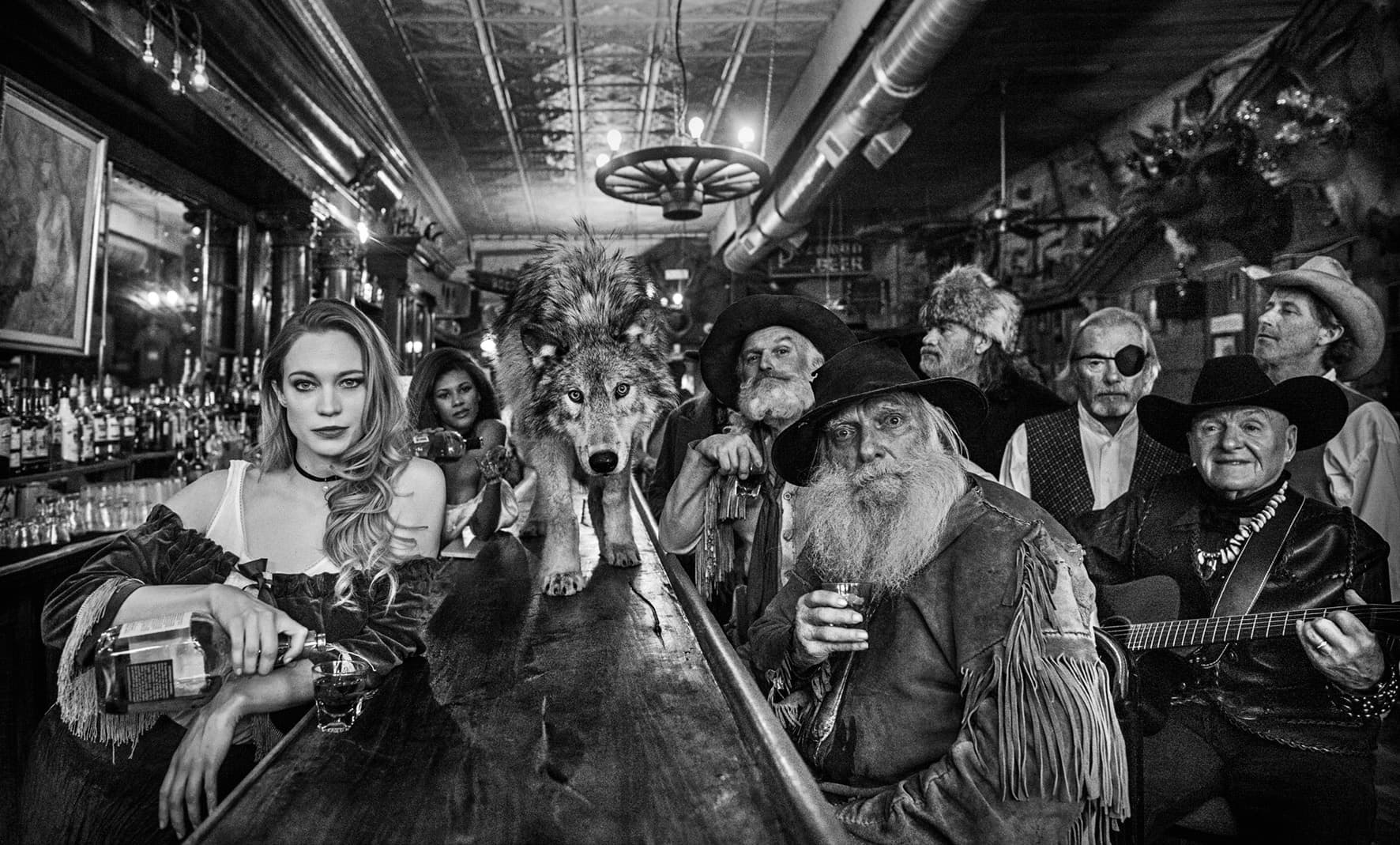
The Usual Suspects, Montana, USA, 2018
On the optical side of things Yarrow reveals, ‘I don’t use zoom lenses but I can understand why people use zooms for convenience and cost. But, ultimately, when you’re blowing a picture up to the size of a snooker table it does tend to show. At the margins some of the Nikon zooms are getting better but 99% of my work is on their primes and it’s the 58mm, 35mm, 105mm; the 200mm f/2 is a great lens as well.’ He adds, in characteristically forthright fashion, ‘I can never understand amateur photographers that go club class to Nairobi [to photograph wildlife] and then have a shit camera. Why don’t they just go economy and get the D850?’
Behaviour of wildlife
As his career has progressed Yarrow admits he has become more adept at understanding animal behaviour. ‘Photographing animals is a bit like photographing people in that you can do better the more you know them. It’s not just the animals; it’s the people on the ground who know those animals. Some of the work we do with big elephants I could never have done five or ten years ago because I didn’t have the best people who knew me and trusted me to do the kind of things that we’re doing.’
He continues, ‘It’s partly knowing the animal and partly being in a position to work with people on the ground who want to help you because they trust you and know that you give back to conservation. This year we gave two million quid back and that obviously is going to help my relationship with people like the Kenyan government.’ The issue of access to animals is a double-edged sword for Yarrow. He explains, ‘If you’ve got an animal that it’s easy to get access to, it then becomes challenging to get something that’s different [pictorially]. With an animal that’s hard to get access to, the difficulty comes in getting that physical encounter; just getting yourself in the position to take the photographs.’
Yarrow continues, ‘Tigers and polar bears usually I’d spend the least amount of time with; probably 1% of the time you’ve got a camera with you. I think you have to have failures. If it was easy to get the work that we get then I’d have a lot more competition to worry about! Success is 99% failure and it’s by failing that you learn how to succeed. The great joy that photographers have is that they can be very tough on their edit. I take a lot of very bad pictures, but the world doesn’t need to see them.’
Influencing conservation
Yarrow’s involvement in conservation charities includes being an affiliated photographer for the Tusk Trust and an ambassador for WildArk and the Kevin Richardson Foundation. Alongside his latest book he has a travelling exhibition that, at the time of writing, was due to be shown in 24 cities around the world. Despite such widespread exposure for his work Yarrow remains modest about how his work has influenced conservation issues. He replies, ‘It would be wrong of me to say that we have had a huge influence but we can give it our very best shot. We had a show in Monaco recently and I saw a girl coming out of this big gallery crying; that makes me feel emboldened and empowered in what I do.’
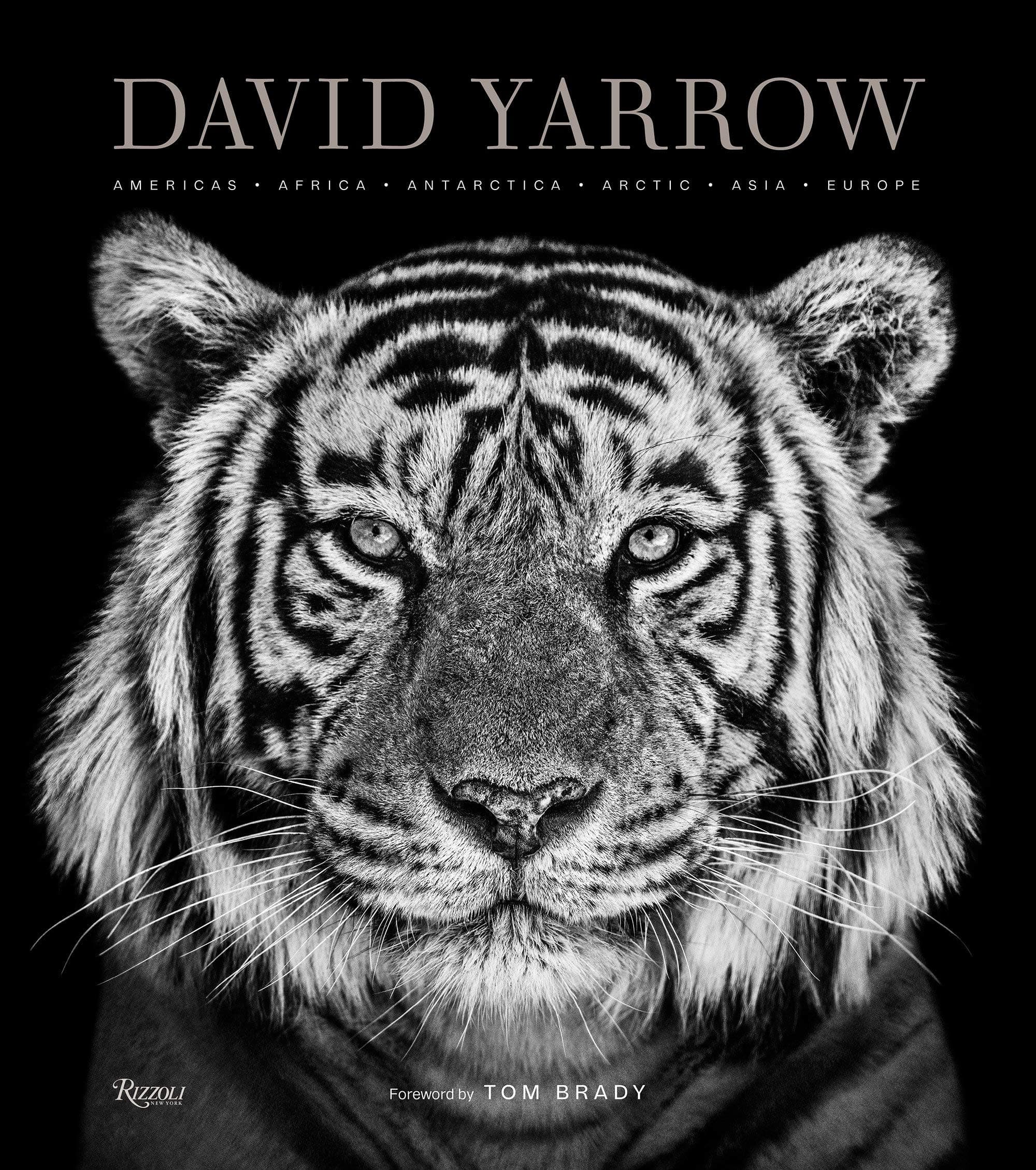
Americas, Africa, Antarctica, Arctic, Asia, Europe, by David Yarrow, is published by Rizzoli Books (ISBN: 978-0-8478-6477-5) with an RRP of £72.50. To find out more go to www.rizzoliusa.com. To see more of David’s work, see his website.

